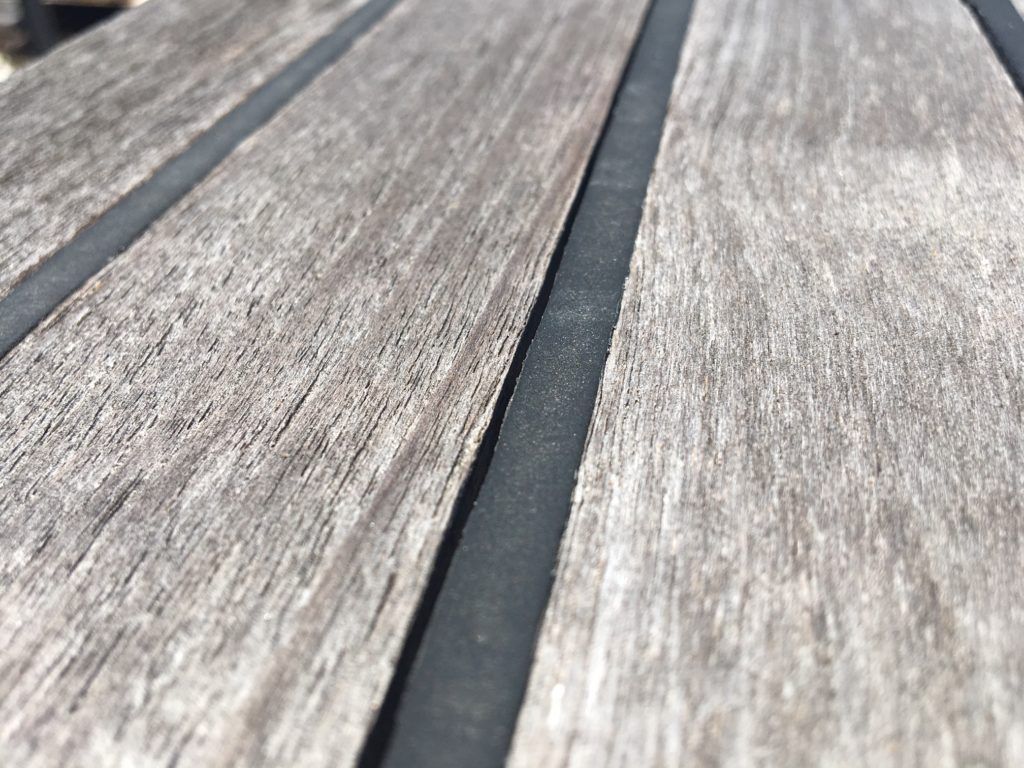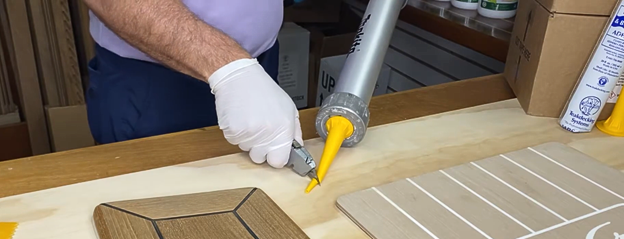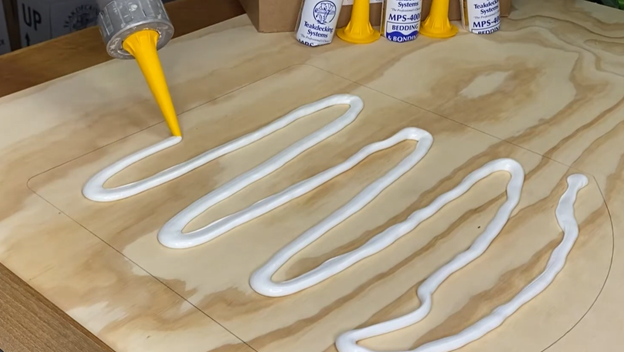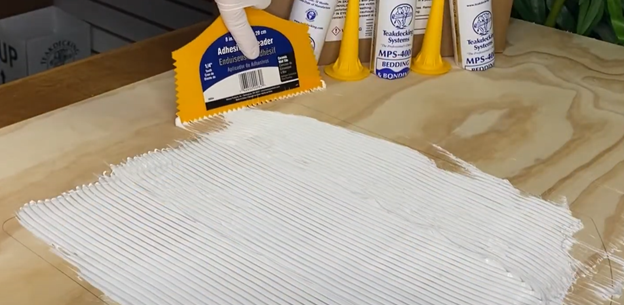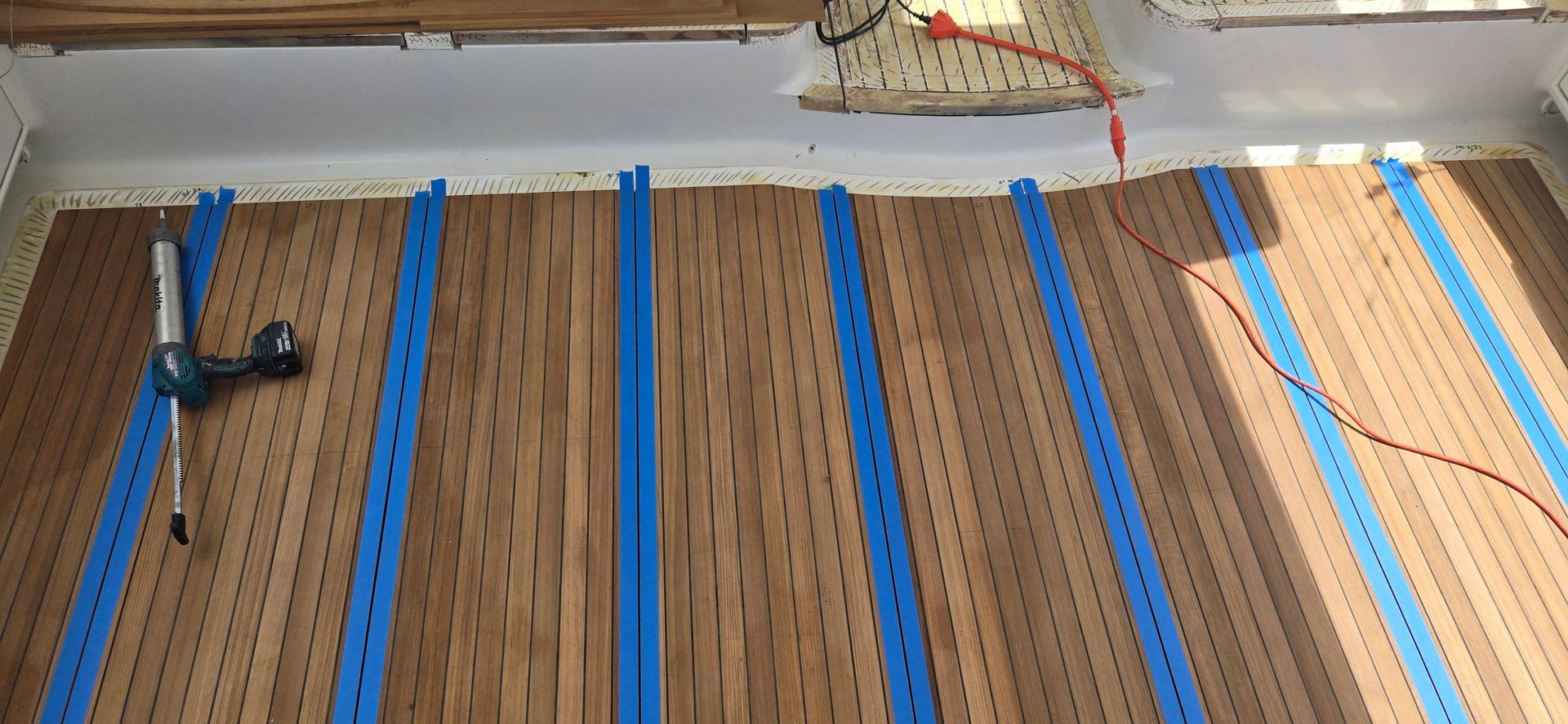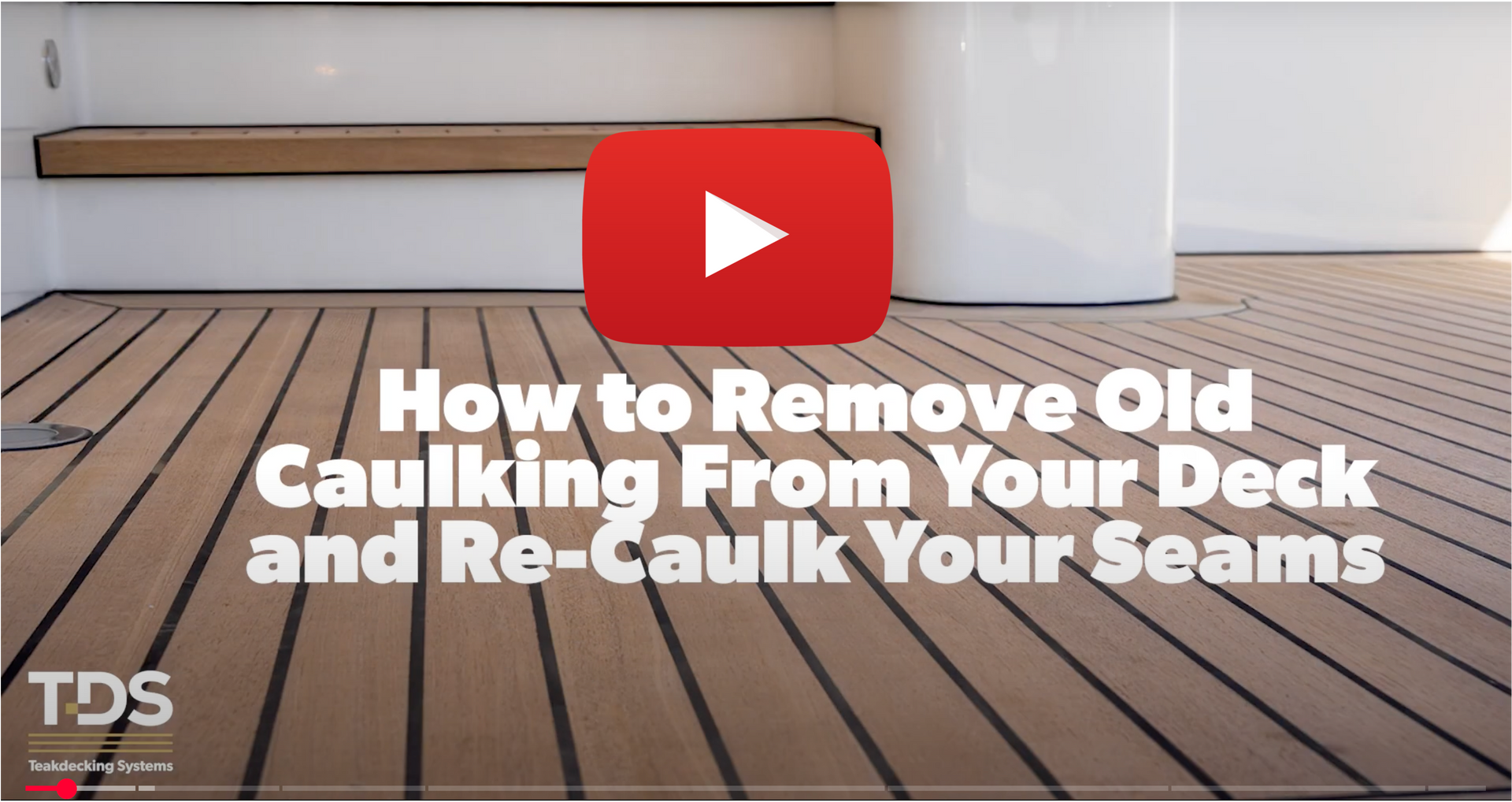Common Questions About Our MPS 4000
COMMON QUESTIONS ABOUT OUR MPS 4000
Q: How do I clean MPS 4000?
A:
To clean MPS 4000 residue, use a solvent such as mineral spirits or a similar cleaning agent designed for adhesive removal. Make sure to test the solvent on a small area first to ensure it won’t damage the surface.
Q: Do you need to clamp decking for good bonding with this product?
A: Yes! Clamping ensures proper adhesion and compression of the epoxy. Here’s how to do it properly:
- Use moderate, even clamping pressure, don’t overtighten, as it can squeeze out too much adhesive.
- Ensure “glue ooze” is visible on both sides, indicating a fully compressed bond.
- If clamps aren’t possible, consider using temporary fasteners to hold the panels in place until the epoxy cures.
Proper clamping helps the epoxy form a strong mechanical bond, increasing durability and longevity.
Q: What is the cure time for MPS 4000?
A: MPS 4000 typically cures within 48 hours at room temperature (around 70°F / 21°C). However, full strength may take up to 7 days, depending on environmental conditions like temperature and humidity. Ensure surfaces are properly prepared for the best results.
Q: Will acetone affect MPS 4000? Why are mineral spirits recommended?
A: Acetone can affect MPS 4000 by weakening its bond or causing changes in its composition. Mineral spirits are recommended because they effectively clean adhesive residues without damaging the adhesive's integrity or the surfaces underneath. They are less aggressive than acetone, making them safer for maintaining the quality of your project.
Q: Can SIS 440 be used with MPS 4000?
A: SIS 440 caulking can be effectively used with MPS 4000, as they are both designed for marine applications and complement each other. SIS 440 cures without needing a primer and provides excellent adhesion, while MPS 4000 serves as a strong adhesive. However, ensure that the surfaces are clean and properly prepared for optimal bonding.
Q: How is MPS 4000 different from other epoxies?
A: MPS 4000 stands out primarily because it's a single-component, fast-curing elastomeric adhesive designed specifically for marine applications. Unlike typical epoxies, which are two-part systems requiring mixing, MPS 4000 is ready to use, making application easier and quicker.
In comparison to other popular epoxies, MPS 4000 provides superior tensile strength and tear resistance. Other popular brands may also be marine-grade but might require priming for certain substrates and aren’t always as adaptable in terms of joint movement.
Q: What to do if the MPS 4000 made a mess during bedding?
A: If MPS 4000 made a mess during bedding, here’s what you can do:
- Act Quickly: Clean up any excess adhesive before it cures. While it's still wet, use mineral spirits on a clean cloth to wipe away the mess.
- For Cured Adhesive: If it has cured, you may need to carefully scrape it off using a plastic or wooden scraper to avoid damaging the underlying surfaces.
- Smooth Edges: If any residue remains, lightly sand the area with fine-grit sandpaper to smooth it out.
Reclean: After removal, ensure the area is clean and dry before applying any new bedding or adhesive.
Q: Can you sand away the cured product off teak or is it better to remove while its wet if there is a lot of it
A: It's definitely better to remove MPS 4000 while it's still wet if there's a lot of it. This prevents potential damage to the teak and makes cleanup easier. If the adhesive has already cured, you can sand it off, but be cautious to avoid excessive teak removal. Use fine-grit sandpaper and sand with the grain to preserve the surface.
Q: What do I do if my MPS 4000 is still tacky after 24 hours?
A: If MPS 4000 is still tacky after 24 hours, it may not have cured properly due to factors like low temperature, high humidity, or improper surface preparation. Here’s what you can do:
- Check Conditions: Ensure the area meets recommended temperature and humidity levels for curing.
- Wait Longer: Sometimes, it simply needs more time. Full strength can take up to 7 days.
- Reapply: If it remains tacky after a longer period, you may need to remove it and start over, ensuring surfaces are clean and dry.
Q: How long after application can I fill the seams?
A: You typically need to wait until MPS 4000 has fully cured before filling seams, which can be up to 7 days depending on conditions. For best results, ensure the adhesive is set properly and the surface is clean before applying the caulk. Always follow the manufacturer's guidelines for specific timing based on environmental factors.
Q: When filling the seams, do I need to wait for the epoxy to cure from the fastener holes from the bedding process?
A: Yes, it's essential to wait for the epoxy to cure from the fastener holes before filling the seams. This ensures that the adhesive has reached its full strength and will provide a solid base for the caulk. If the epoxy is still curing, it could affect the adhesion and performance of the caulk. For the best results, check the manufacturer's guidelines regarding curing times.
Q: How is MPS 4000 better than other products for bedding?
A: MPS 4000 excels for bedding due to its unique formulation as a single-component, fast-curing adhesive, which simplifies application without mixing. It offers superior tensile and tear strength, making it ideal for marine environments. Unlike typical two-part epoxies, it’s user-friendly and cures quickly, allowing for immediate work on other tasks.
Additionally, MPS 4000 is elastomeric, accommodating joint movement better than many rigid adhesives. This flexibility is vital in marine applications where conditions can vary greatly.
ALL PRODUCTS
